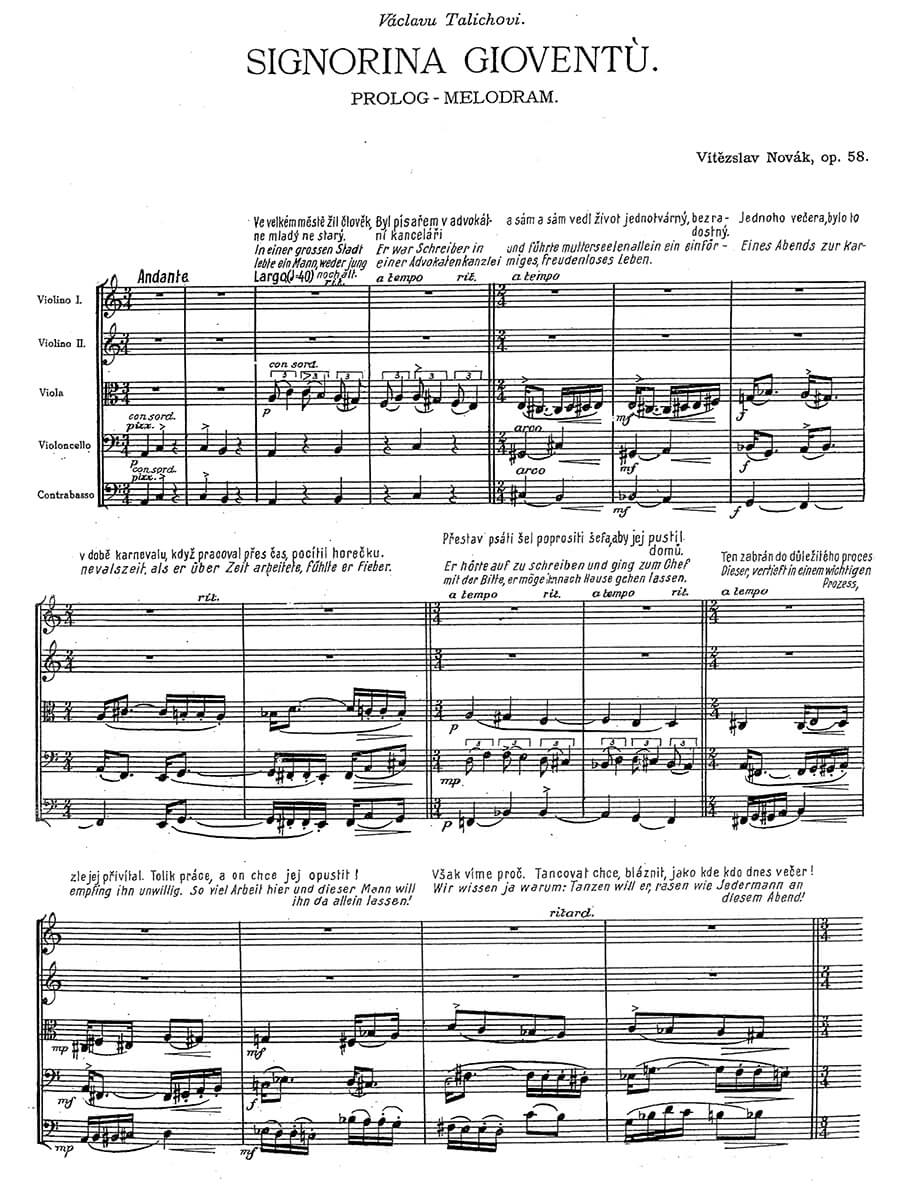Signorina Gioventù, Ballet pantomime Op. 58 (Scenario based on a tragic fairy tale by Svatopluk Čech)
Novák, Vítezslav
69,00 €
Preface
Vítězslav Augustín Rudolf Novák – Signorina Gioventù, Prolog – Melodram [Prologue – Melodrama], op. 58
(b. Kamenice nad Lipou, near Pelhřimov [Vysočina Highlands Region of Southern Bohemia], 5 December 1870 – d. Skuteč, near Chrudim [Pardubice Region, Eastern Bohemia])
Prologue p.1
1. Dim, poorly lit office p. 11
2. The street p. 35
3. Inside the costume shop p. 92
4. Masked ball p. 150
5. A small salon with palms p. 233
6. The ballroom p. 289
7. The street p. 345
Publications
Full orchestra and piano versions, Prague: Hudební matice, 1930.
Scenario based on a tragic fairy tale by Svatopluk Čech (1846-1908), printed in the score in Czech & German
Synopsis in the first printing by Roman Veselý in French, English, and Italian
Instrumentation
triple winds with four horns and tuba, percussion, harp, piano, strings
Recent Performances
South Bohemian Theater (České Budějovice, Czech Republic), 1983;
Brno National Theater, 1989.
Influence
Michael Beckerman, one of the leading English-language writers on Czech orchestral music, places composer Vítězslav Novák in the “all-purpose pantheon of Smetana, Dvořák, Fibich, Janáček, Suk, Foerster and Martinů.” Author and music critic Max Brod called his music “authentically spiritual”, and each of his life anniversaries were publicly celebrated. Antonín Dvořák, his master class professor at the Prague Conservatory from 1891-1892, encouraged him to explore Slovakia and its Wallachian (Moravian) border region. Novák had entered the conservatory in 1889, studying piano with Josef Jiránek (from 1889-96) and counterpoint with Karel Stecker, who outlasted Dvořák at the Conservatory. Novák‘s early work attracted the attention of Brahms, who scouted new talent (including Dvořák) for his publisher, Simrock. Most of Novák’s orchestral scores were published by Universal Edition (Vienna).
A well-respected member of the Czech modernists, Novák’s musical style combined neo-romantic form and orchestration with elements from Moravian and Slovak folk music. The highpoint of Novák’s compositional career preceded World War I: both Pan, op. 43 (a five-movement, motivically-generated piano work featuring a beautiful scene by a mountain stream) and Bouře [The Storm], op. 42 (a turbulent, windswept cantata) were published in 1910 and widely performed. Pan was orchestrated in 1912, and Novák went on to publish four operas, more symphonic poems, and challenging, chromatic choral works. …
Read full preface / Das ganze Vorwort lesen> HERE
Score Data
| Edition | Repertoire Explorer |
|---|---|
| Genre | Ballet |
| Printing | Reprint |
| Pages | 357 |
